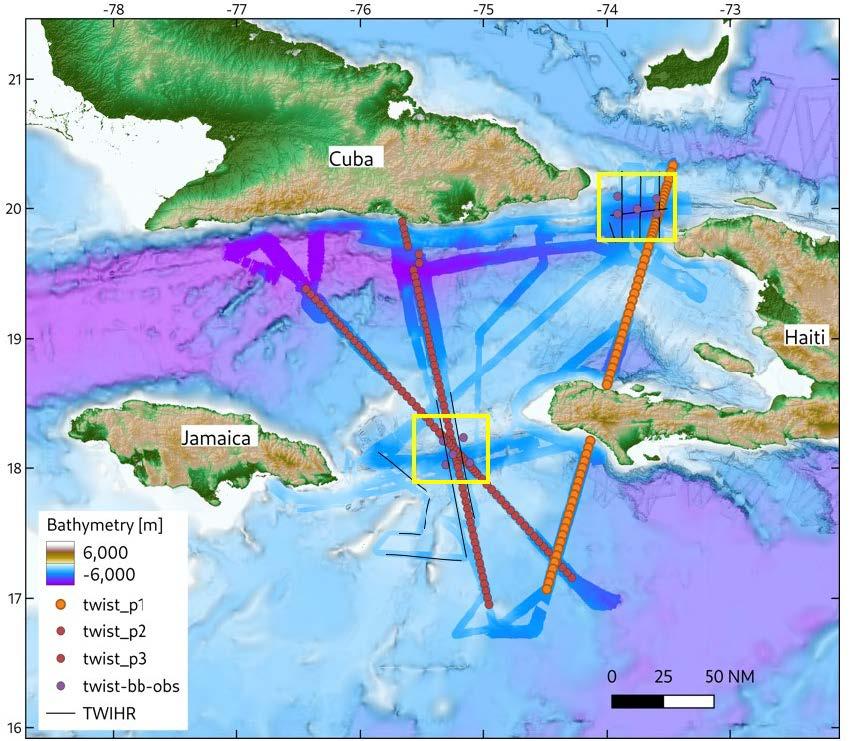Haiti-TWiST
| Type | Oceanographic cruise |
|---|---|
| Ship | Pourquoi pas ? |
| Ship owner | Ifremer |
| Dates | 02/06/2024 - 22/07/2024 |
| Chief scientist(s) | ROEST Walter  , MARCAILLOU Boris , MARCAILLOU Boris  , AIKEN Chastity , AIKEN Chastity |
GEO-OCEAN - UMR 6538 Univ. Brest, CNRS, Ifremer, Univ. Bretagne Sud Place Nicolas Copernic 29280 Plouzané |
|
| DOI | 10.17600/18001258 |
| Objective | The twin transform fault system bounding Haiti - the Septentrional-Oriente Fault Zone and Enriquillo-Plantain Garden Fault Zone - is known from paleoseismic and recent records to have produced damaging earthquakes and tsunamis. However, we know very little about these faults' ages and origins, their structures, their modes of fault failure, or even the role of fluids in their faulting processes, all of which are fundamental for understanding their ability to produce earthquakes and tsunamis. The Haiti-TWiST Cruise took place from 2 June to 22 July 2024 on the R/V "Pourquoi pas?". It is a multi-disciplinary project spanning the twin transform fault system. With the data collected, we aim to: 1) unravel their tectonic history and constrain their crustal and mantle structure, 2) characterize their fault slip behavior, and 3) identify their thermal states and role of fluids in their faulting processes.
During the first leg of the cruise, deep reflection and wide-angle seismic data were collected, using a 4990 in3 airgun array, a 6 km streamer, and more than 60 ocean bottom seismometers. High resolution seismics was also collected across the faults, using a 3 km streamer and a 320 in3 airgun array. For the second leg, the accent was on sediment coring, pore water sampling, and heat flow measurements as well as high-resolution seafloor mapping and acoustic water column imaging. Ten broadband ocean bottom seismometers were deployed for a period of one to two years, to passively monitor earthquakes. Collectively, these data image the two transform faults on different spatial resolution scales. During the processing and interpretation phase that follows the cruise, we hope to reveal how stresses are released along these faults, what role pore or deep fluids may play, and what their thermal states and fluid sources are. |

